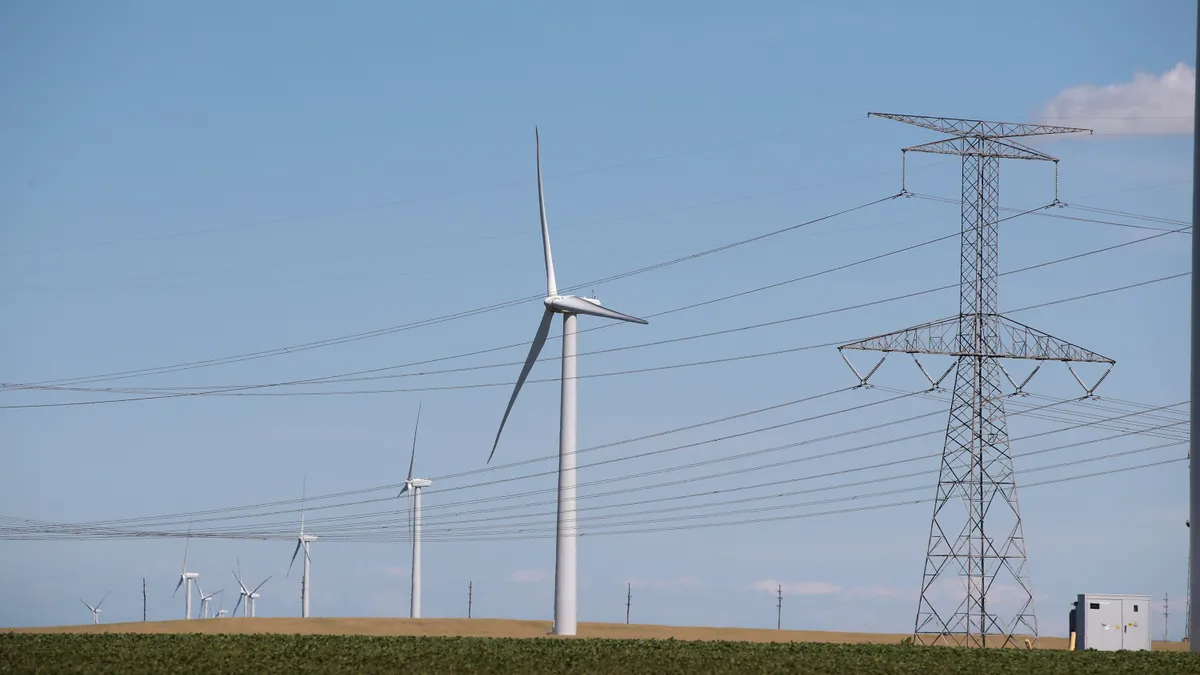Dive Brief:
-
Clean energy advocates and a transmission developer are urging the Federal Energy Regulatory Commission to reject a proposal that would allow incumbent transmission owners in the Midcontinent grid operator's region to pay for and profit on any network upgrades needed for merchant high-voltage direct current (HVDC) power lines.
-
The Midcontinent Independent System Operator (MISO) proposal pending at FERC would impose financial burdens on HVDC projects developed by non-utilities, potentially impeding the buildout of the transmission system and clean energy facilities, the American Clean Power Association (ACPA) said in a filing at FERC on Monday.
-
However, MISO's transmission owners, including Ameren Missouri, Duke Energy Indiana and Wisconsin Electric, told FERC the proposal is required to give them the same chance to self-fund grid upgrades for merchant HVDC projects as they have for upgrades for generating facilities.
Dive Insight:
MISO's proposal at FERC is part of an effort by utilities in different regional transmission organizations and ISOs to gain the option to pay for upgrades to the grid needed to interconnect new resources such as wind farms. That would allow them to earn a profit on those investments.
Generally, generators pay for grid upgrades themselves, which they say is a less expensive option than having an incumbent transmission owner pay for the investments.
Transmission owners in the PJM Interconnection and the New York Independent System Operator have been seeking the right to self-fund network upgrades. FERC in September rejected a self-fund proposal by New York utilities but is considering a narrower proposal from them.
"The cost and extent of network upgrades have increased dramatically in recent years, so it's not surprising that FERC is having to adjudicate a growing number of disputes between generators and transmission owners," Gabe Tabak, ACPA counsel, said in an email.
"The complex proceedings over how to fund upgrades — in New York, PJM, and now for merchant HVDC lines in MISO — make clear that it's critical for FERC to reform interconnection and transmission planning rules in a way that works for generators, utilities and consumers," Tabak said.
FERC allowed MISO's transmission owners to self-fund upgrades for power plants in a 2018 remand decision — a revision prompted by a court order. That decision is under review by the U.S. Court of Appeals for the District of Columbia Circuit. The court heard oral arguments on the dispute last week and a decision is expected early next year.
Despite the litigation, MISO's transmission owners told FERC they should be given the option of paying for network upgrades for merchant HVDC projects.
The proposed changes to MISO's tariff "are necessary to establish comparable opportunities to utilize the self-fund option that was restored to the MISO tariff by the commission's remand order," the transmission owners said.
The proposal is based on the FERC-approved self-funding option transmission owners have for generator-related upgrades, according to the transmission owners, which are mostly utilities. MISO asked that the proposal take effect on Feb. 2.
ACPA and the developer of the SOO Green HVDC project asked FERC to dismiss the proposal.
MISO's proposal would create "additional, inappropriate and unjustified" financial barriers to independent transmission development, and could lead to extending self-funding to independent AC-transmission projects, ACPA said.
The proposal grew out of a hasty stakeholder process that skipped typical steps, according to the trade group. It also treats dissimilar resources — transmission lines and generators — as if they were similar, ACPA said.
"MISO continued to march forward with the merchant HVDC filing, treating merchant HVDC transmission-to-transmission connections that seek to withdraw power in congested areas (and hence will likely increase grid reliability) as if they were generator interconnection projects injecting power on the grid," ACPA said.
SOO Green HVDC Link ProjectCo told FERC the MISO proposal "creates barriers to entry for new critically-needed transmission facilities, reduces competition, and imposes burdensome costs on merchant project developers and consumers."
The proposal would increase the cost of the $2.5 billion merchant HVDC transmission project, SOO Green, that would run between MISO and PJM by about $30 million, according to the company. The proposal would force SOO Green to pay the transmission owners' cost of capital for upgrades instead of the "substantially" lower cost of capital it can obtain in the market or from equity investors, the company said.
"It is unjust to require [merchant] HVDC developers that undertake significant effort to develop a strategy, obtain rights of way, secure permitting, and engineer needed transmission projects and then be exposed to above-market, excessively high, costs of capital," SOO Green said.














